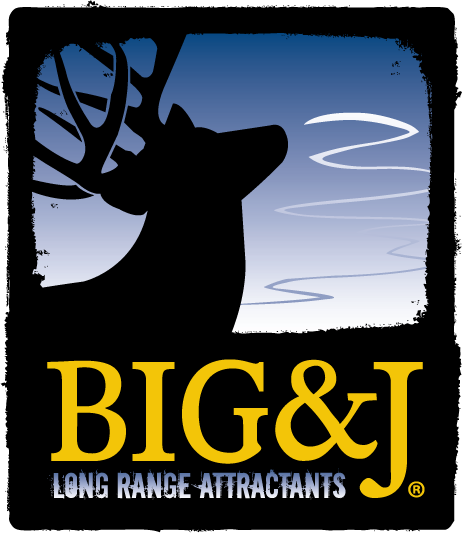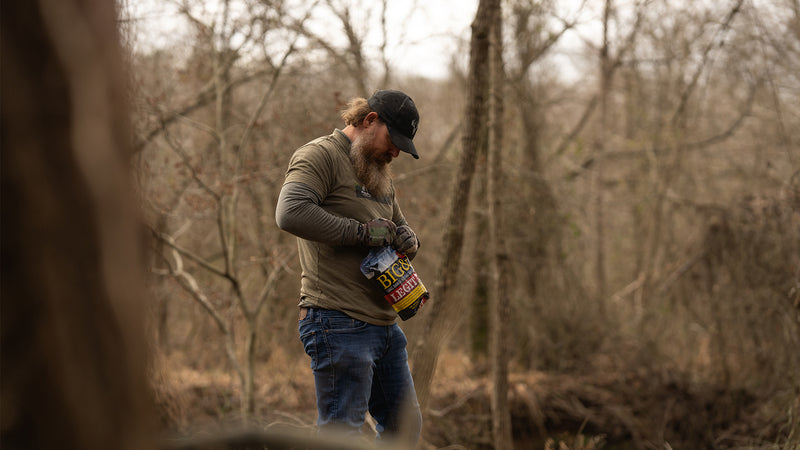By: Heath Wood
As a deer hunter, I constantly pursue making deer healthier and more prosperous for future hunting seasons, or do I? As humans, we often find ourselves in moments where we slap our foreheads and say, what was I thinking. These moments typically occur when we have missed the obvious.

Once I focus on deer, I usually proceed with this attentiveness until most deer seasons have ended, in late December and mid-January. Each year I begin feeding deer, using trail cameras, creating food plots, and many other tasks around the end of May through the first of June. Unfortunately, I am not in constant pursuit. When I claim to be in constant pursuit, I tend to forget that I usually stray away from anything related to deer hunting throughout the winter and spring until I resume at the beginning of summer. I miss out on the most crucial time to help mature bucks. Bucks need help boosting their energy and their bodies back up from an active rut during the fall and helping endure the winter months ahead. The months of January and February could be the most critical months for deer to get help from hunters.
During the fall, specifically October and November, bucks spend an extended period pursuing does for breeding purposes. During this time, bucks lose focus on getting the proper nutrients their bodies need due to their emphasis on breeding. When studying how the rut affects buck's bodies, I found that it is typical for mature bucks to lose twenty to twenty-five percent of their body weight during the breeding season. To help get a better realization of how much it can affect their bodies, a buck that weighs an average of one hundred and eighty pounds can lose up to thirty pounds during a month-long period.
During late December, after delving into several studies explaining that mature bucks spend a few weeks after the rut laying down throughout most of the day, resting so their bodies can recover from the toll that they put themselves through during the breeding season. I began to realize why I failed to see much buck movement while trying to late season bow hunt or when trying to partake in late season muzzleloader hunting.

After a few weeks of rest and recovery, bucks require food to put pounds back on and minerals to help boost their energy. The problem is that food and minerals can be hard to find during the cold winter months when most food sources have either died from the freezing temperatures, are covered by ice and snow, or have already been consumed. To state the obvious, food can be scarce. When speaking with Ph.D. nutritionist Will Griffin, he explained that antler growth for the upcoming season could be boosted by providing food and minerals during the winter months. He states that the faster a buck puts back on the weight he lost and is supplied with needed nutrients, the less stressed he will become. Less stress and the correct amount of minerals and nutrients equals better antler growth for the upcoming year. Griffin suggests putting out as many nutrients and food as possible during the winter months, recommending using both Big and J’s Headrush and Legit products that contain vital minerals that bucks need during this time.

Depending on the size of the property, it is recommended to have multiple mineral sights for deer to have easy access. It is also essential to have plenty of food available during the cold winter months. Many hunters use whole corn to help supplement a deer's nutritional needs during this period. Yes, corn can help deer survive the winter by providing them much-needed food; yet it is better to use Big and J’s BB2 to give bucks what their bodies need while still providing them with a tasty treat. To better understand why BB2 is better than corn, refer to, The question about BB2 vs . Corn. For a summarized answer, BB2 has a more excellent energy value, protein, and mineral content per bite when compared to whole corn. What that means is each bite of BB2 is more concentrated with nutrients, making BB2 preferred by deer compared to corn.
I try to keep at least ten to twelve bags of BB2 on hand during the winter. Fortunately, being from southern Missouri, we do not typically have a bone-chilling cold mixed with snow accumulation. Our winters often consist of shorter, colder temperatures and two to three snowstorms with measurable snow. However, when we do have a cold snap or accumulating snow, I try to feed more BB2 during that period. On most occasions, I hang a game camera on the site where I pour the BB2. I am always amazed by the increase of deer that show up, trying to stay warm by getting an energy boost from the BB2. I honestly believe that the stress level of my entire deer herd decreases when they do not have to struggle to find food for energy when it is cold.
As a direct result of feeding needed nutrients, including energy, protein, and minerals, throughout the harsh winter months, I have witnessed a dramatic improvement in the health and growth of mature bucks. Improving a deer head is a year-round battle, not a task reserved for a few months of the year. Take it from me, when the right products are used at the right time; there will be no need for a “what was I thinking” moment.

